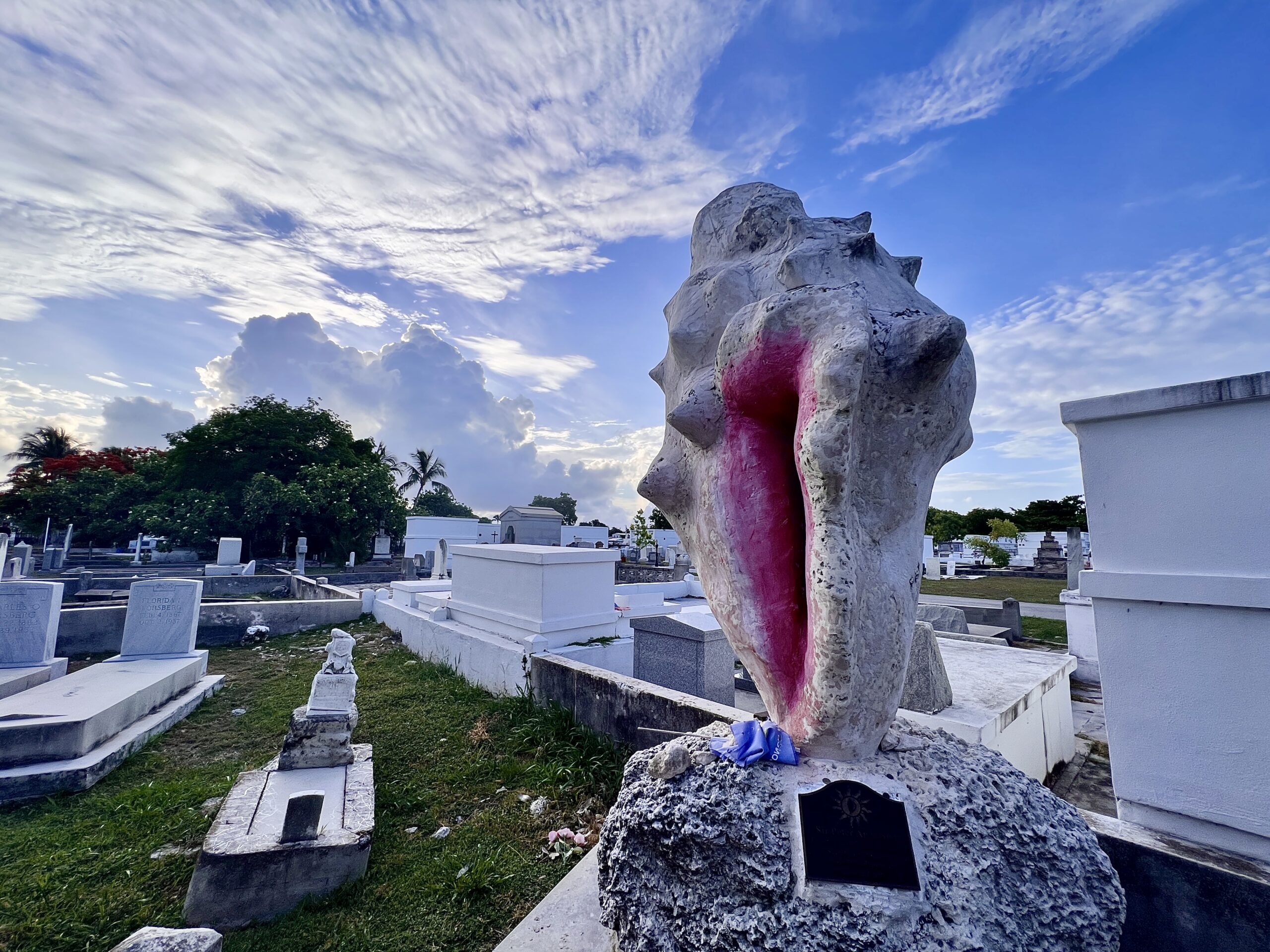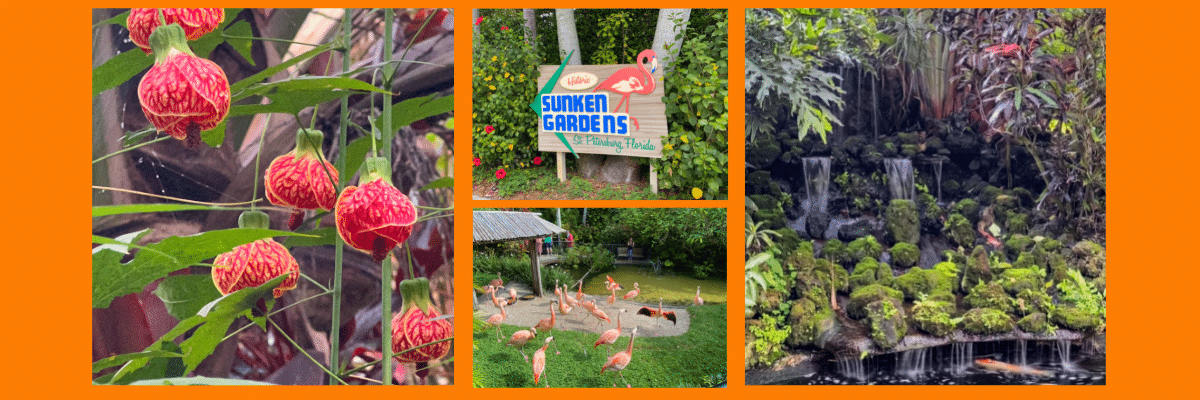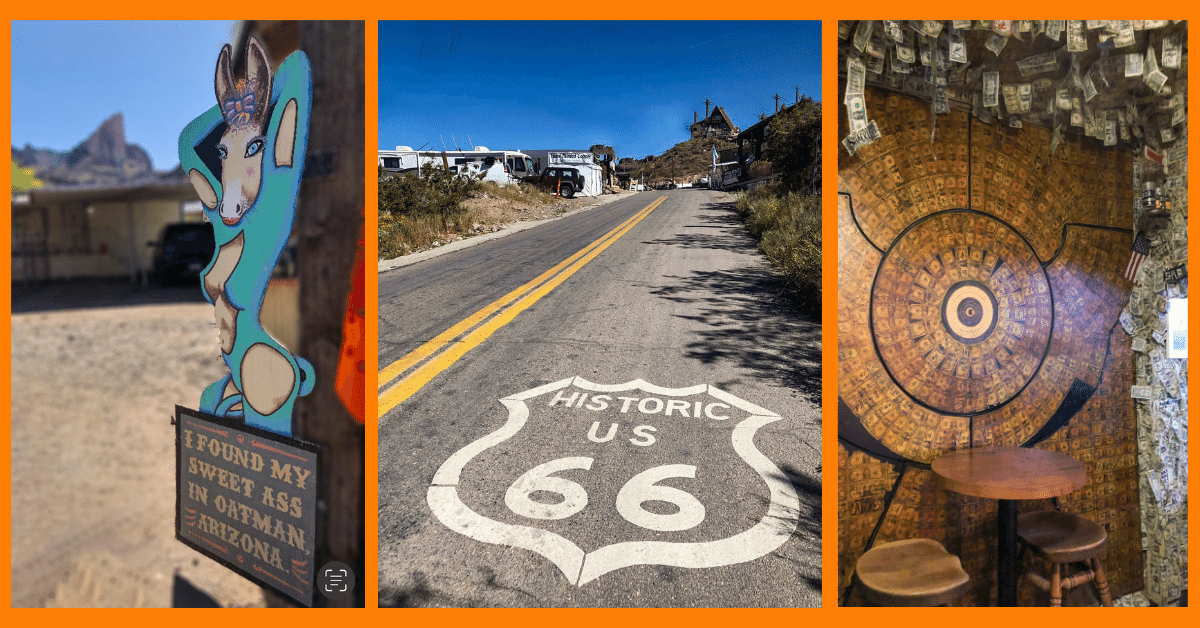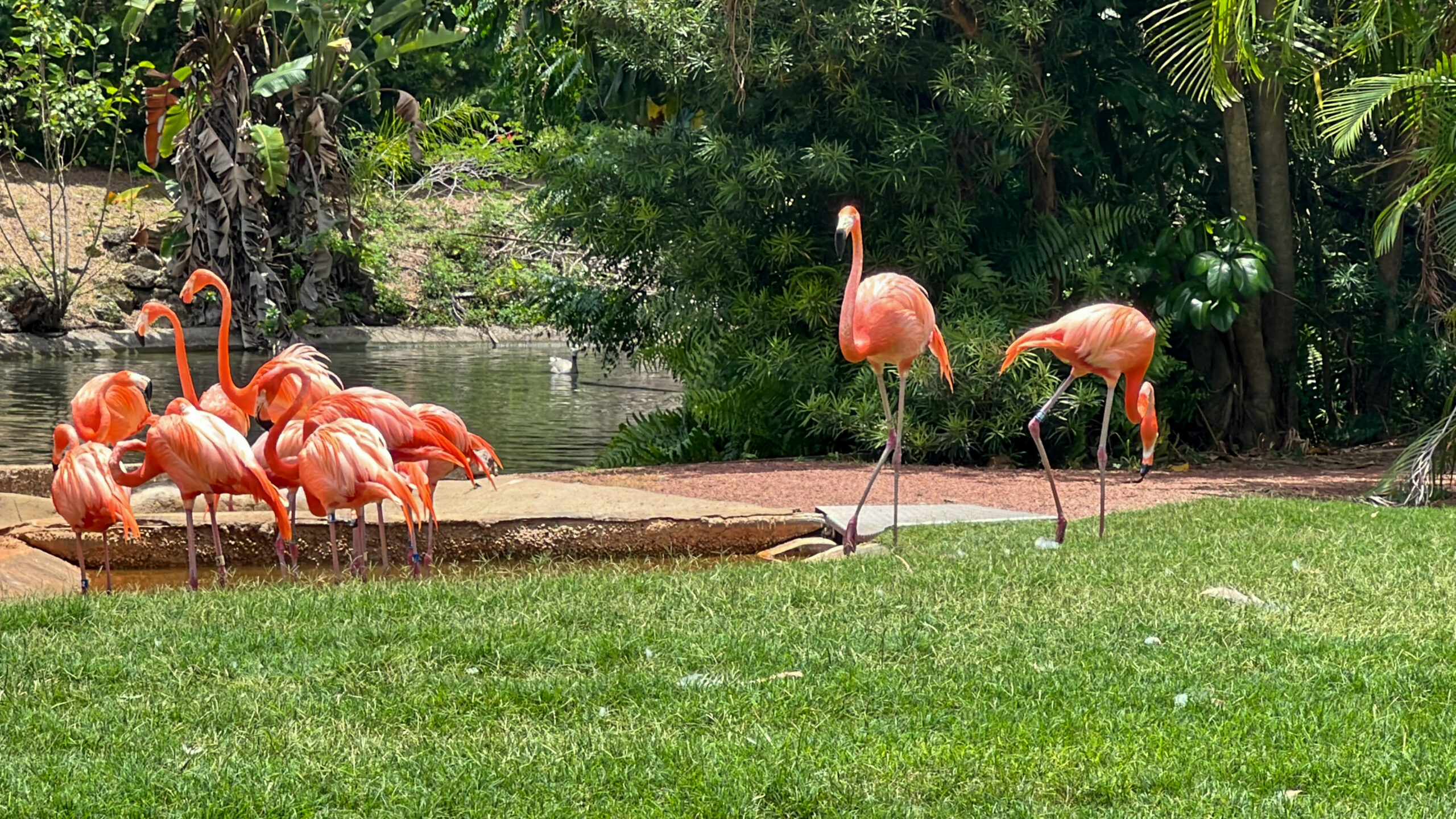The only thing new in the world is the history you don’t know
Harry S Truman
A mere two blocks from bar-lined Duval Street in Key West sits a nondescript house that served numerous Presidents and other world leaders. Facilitating working vacations for our nation’s leaders, this tropical paradise is a far cry from the marble and granite edifices of Washington, D.C.
Disclosure: Some links on our site are affiliate links. If you purchase a linked item, we will make a commission, at no extra charge to you.
Facts about Harry S Truman and his Little White House
- Harry S Truman actually had no middle name. His parents gave him the initial S to honor his grandfathers. Anderson Shipp Truman and Solomon Young.
- The house was built in 1890 as housing for the Navy Commandant and Paymaster.
- It served as Command Headquarters during the Spanish-American War.
- It was turned into a single-family dwelling, in 1911.
- In 1912, President Taft stayed here on his way to inspect progress on the Panama Canal.
- Scientist Edward Hayden lived here from 1912-1915 while conducting hurricane research.
- Thomas Edison spent 6 months here in 1918 while developing new weapons for the war effort. One invention was a device to detect submarines by sounds from moving vessels. It could “hear” a torpedo from 5,000 yards away.
- President Truman first visited the house in 1946.
- In 1948, the Joint Chiefs of Staff met here to merge the Departments of War and the Navy.
- During the cold war, it served as the headquarters for the East Coast Anti-Submarine Warfare School.
- Truman was said to “sneak out” of his Little White House to head to local favorite Pepe’s for a meal.
Pre-Truman Years
President Truman’s many visits gave it the name with which it is most associated. But, many other noteworthy guests stayed beforehand. President Taft rode Henry Flagler’s Overseas Railroad to Key West and stayed in the home. After a brief stay, he boarded a ship to Panama to inspect the building of the canal, in 1912.
Thomas Edison, well-known for inventing the phonograph, the light bulb, and the motion picture camera, also aided the military with his inventions. His first stint helping the Navy was during the brief Spanish-American War. As the US was dragged into WWI, he again put aside his work to help his country. Serving as the Chairman of the Naval Consulting Board, Edison spent some time in Key West. During this time, he stayed at the home while developing many prototypes and devices. Some of these include an early version of sonar that could detect incoming torpedoes up to 5,000 yards away. He devised a water penetrating projectile that wouldn’t ricochet off the water, but continue smoothly to reach U-boats. Edison pioneered the idea of using sea anchors to quickly turn a ship 90 degrees to avoid torpedoes. While it worked well with smaller ships, larger ships just came to a stop. Overall, he created 49 different ideas, prototypes, and devices.
President Coolidge stayed en route to Cuba for the Pan-American Conference. I can’t find anything definitive to say whether President Coolidge stayed at the home during his stay in Key West. But I did find an interesting story. A story that illustrates Key West’s whole identity. Its’ defiance of authority that makes it such a fun place to visit. Shortly after arriving in Key West, the President and his entourage soon realized that alcohol flowed freely in this Florida city. Although Prohibition was still the law of the land, they must have missed the message this far south. After his secretary announced the President went to bed, the real party began. Beverly Smith, Jr. was traveling with the President as a reporter. She said “With these words, the dignity of the tour began to crack. It was as though the mice had been informed that the cat was away”. The party lasted all night, with some stumbling home in the early hours of the morning. The next day, one reporter was so drunk, that he fell into the ocean while boarding the ship to Cuba.
I have a notion to move the Capitol to Key West and just stay.
Harry S Truman, in a letter to his wife Bess TRuman
President Truman
By 1946, President Truman had served 19 months in office. This left him physically exhausted. His doctor, Wallace Graham, ordered a warm vacation. So, in November of that year, Truman made his first of 11 visits to, what is now referred to as, Truman’s Little White House. Upon leaving, he promised to return whenever he needed the rest. He must have needed it sooner than expected. His second visit came in March of 1947. But in fairness, if you had the privilege to visit Key West when you needed rest, wouldn’t you go every few months, too? Thus began his pattern of vacationing here every November-December and February-March. In all, Truman spent 175 days of his presidency at the house. While on these “working vacations”, he approved the Marshall Plan and the Truman Doctrine. Gave recognition to the state of Israel. He also issued an executive order requiring federal contractors to hire minorities. And orchestrated a two-week cease-fire agreement for Korea.
What Truman realized was, that wherever the President was, so was the White House. Much like the call sign of any plane carrying the President is “Air Force One”. With that, documents originating here would read “The White House, US Naval Station, Key West, Florida”.
Every poilitical battle I have I fight with everything I have got and when it’s over I get hold of my opponent and we have a bourbon and branch and say, “What can we do for the country?”
Harry S Truman
Key West Agreement
Ok, it was actually called “Functions of the Armed Forces and The Joint Chiefs of Staff”. But doesn’t the Key West Agreement sound so much better? James V. Forrestal, who would later become the first Secretary of Defense, drafted the policy paper. The most prominent feature outlined the division of air assets between the Army, Navy, and newly created Air Force. And, with modifications, this still provides the basis for dividing these assets today. The service chiefs approved the basic outline while meeting here from March 11-14, 1948. When it was all said and done, the Key West Agreement was considered a big win for the Navy and Naval Aviation. Without it, Naval Aviation might have developed under Air Force control during the Cold War years.
Post-Truman Years
Before it was the Department of Defense, it was the War Department. It was called this for 158 years, from August 7, 1789, to September 18, 1947. But a series of meetings held here in 1948 and 1949 by General Dwight Eisenhower resulted in the change. It was split into the Departments of the Army and the Air Force and joined with the Department of the Navy. Later, as President, Eisenhower would return to recuperate after a heart attack. He spent a month from December 1955 to January 1956.
President Kennedy held a one-day summit here with British Prime Minister Harold Macmillan. In March of 1961, the two world leaders met for the first time. They discussed the serious dispute between our two nations over how to handle the Civil War in Laos. Going against Britain’s long-standing foreign policy and the advice of his Chiefs of Staff, PM Macmillan agreed to conduct joint planning with the US on possible military intervention. Kennedy would return once again in November of 1962. He awarded military decorations and inspected US defensive arrays. Shortly after the Cuban Missile Crisis the previous month. His presence helped ease a weary public that Key West was still a safe place to visit. Kennedy was the last sitting President to stay here until President Trump.
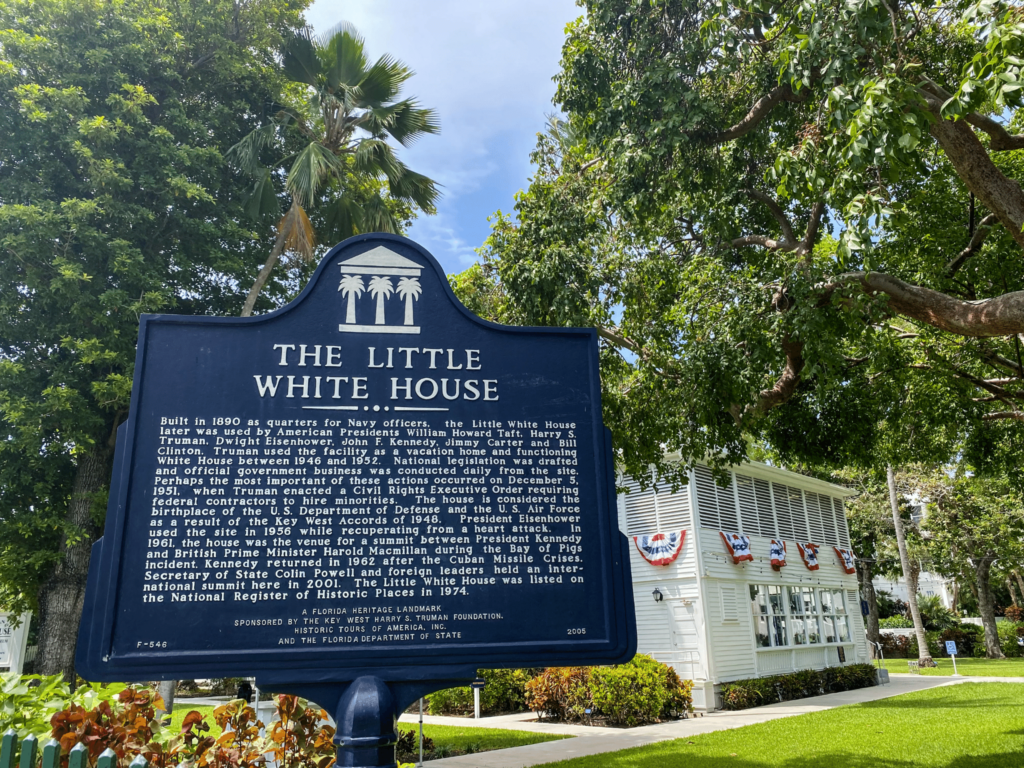
The House, Itself
The house is a British West Indies style of architecture. First developed in the tropical paradises of the Caribbean. The formal Georgian architecture from Britain was adapted to the tropical climate and laid-back lifestyle. Common characteristics are clean lines, high ceilings, large balconies, and expansive covered lanais. Spaces are defined by decorative columns and traditional railings. The style creates a seamless transition between indoor and outdoor living spaces. The high ceilings, tall windows, shady verandas, and balconies with open doors kept houses cooler long before the days of electricity.
Originally built as two beachfront residences, it housed the Naval bases’ first officers. Quarters “A” housed the Base Commandant and Quarters “B” was for the Paymaster. In 1911, it was converted into a single house for the Commandant. In front of the house, additional land was filled. Later, the waterfront view would be blocked by the construction of another building.
After Truman’s death in 1974, the Navy base (renamed Truman Annex) was closed. The house was abandoned and stood unoccupied for 12 years. During this time, Key West residents were rumored to have broken in and “relocated” Truman’s furniture. In 1986, Real Estate developer Pritam Singh purchased the Annex at auction. He put an ad in the local paper with a strange request. That all those that borrowed furniture from the Little White House return the items. He also thanked the residents for “looking after” the antiques for so long. Much of the original belongings were returned. See, you can get a lot by asking politely! Shortly thereafter, Singh transferred ownership to the State of Florida for its use as a museum. The only Presidential museum in the state. He also privately funded the restoration of the building.
Today, approximately 78,000 visitors tour the house annually.
A Final Thought
Truman enjoyed his warm-weather retreat so much, he once wrote to his wife, “I’ve a notion to move the capital to Key West and just stay.” But, I don’t want to imagine transplanting Washington, D.C. to the picturesque paradise that is Key West. Besides, it wouldn’t fit with Key West’s motto…”Close to Perfect, Far from Normal”
There are a great many people, I expect a million in the country, who could have done the job better than I did. But I had the job, and I had to do it. And I always quote one epitaph which is a tombstone in the cemetery at Tombstone, Arizona. It says, “Here lies Jack Williams, he done his damndest.”
I think that is the greatest epitaph that a man can have. When he gives everything that is in him to the job that he has before him, that’s all you can ask of him. And that’s what I have tried to do.
Harry S Truman, during his 300th news conference, April 17, 1952


